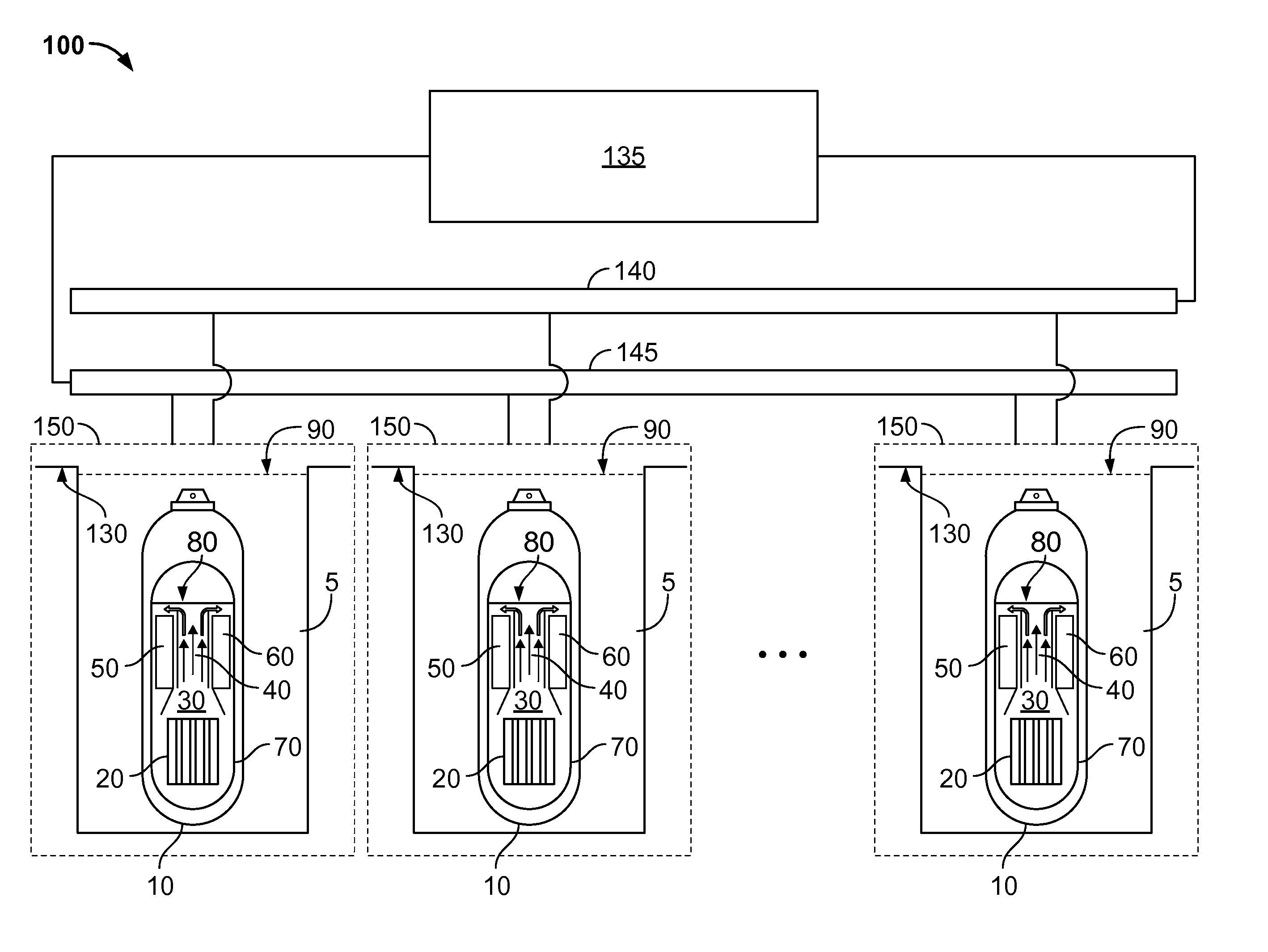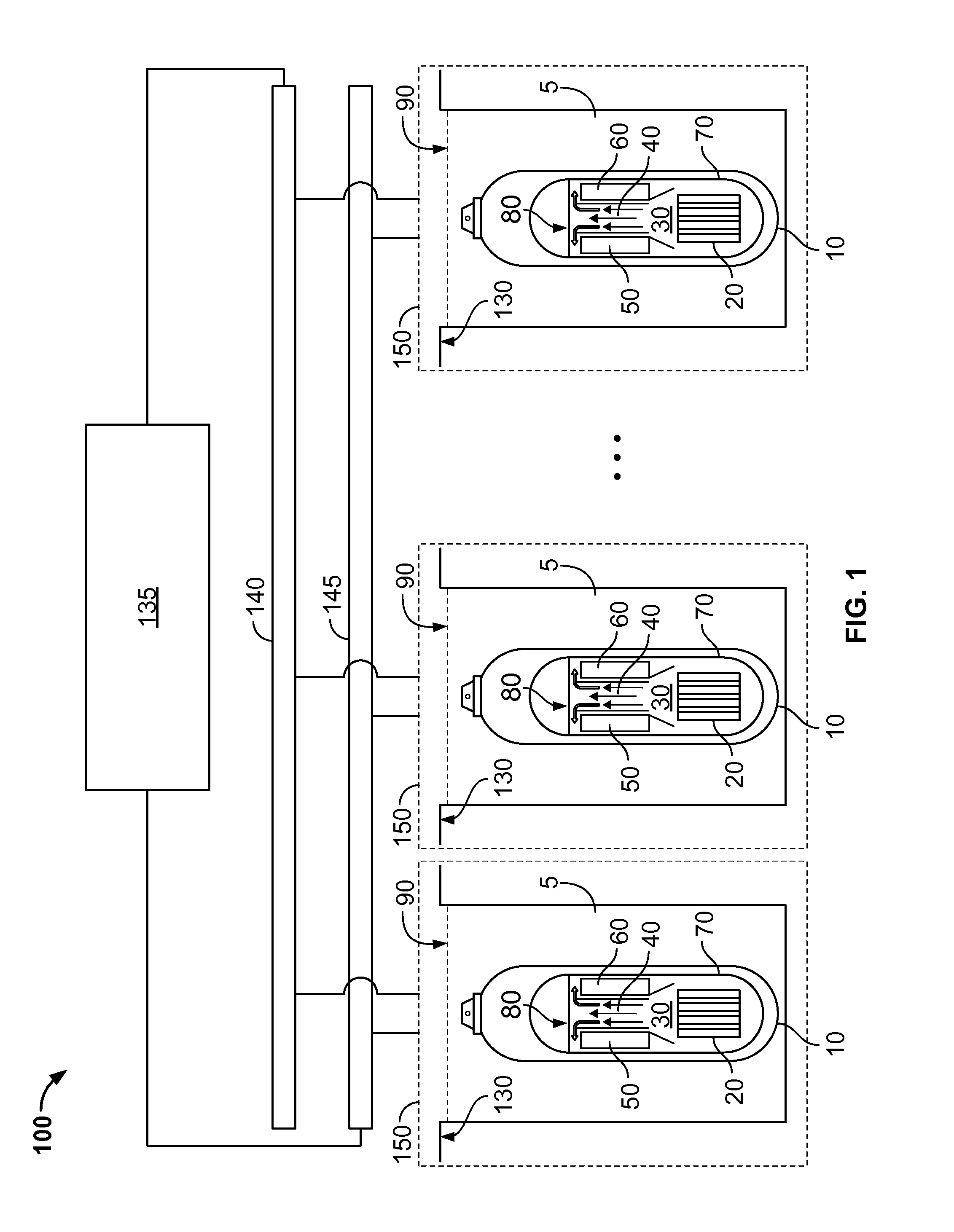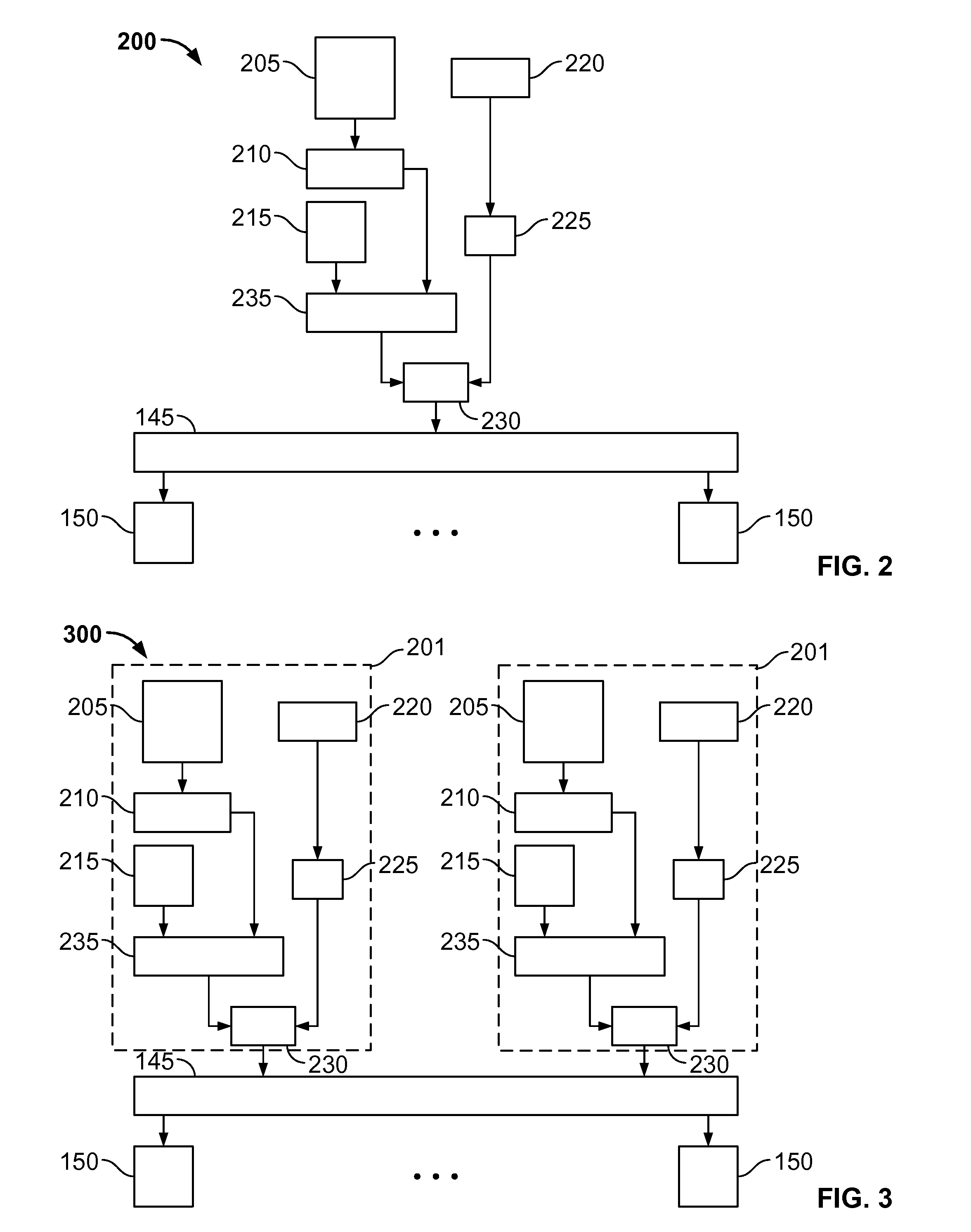Managing Electrical Power for a Nuclear Reactor System
a nuclear reactor and electrical power technology, applied in nuclear engineering, emergency power supply arrangements, greenhouse gas reduction, etc., can solve the problems of affecting the commercial affecting the design and operation of electrical power systems, and affecting the economic viability of nuclear power plants, so as to reduce the cost of maintenance and storage, and reduce the cost of such qualified 1e batteries. , the effect of reducing the space requirements
- Summary
- Abstract
- Description
- Claims
- Application Information
AI Technical Summary
Benefits of technology
Problems solved by technology
Method used
Image
Examples
Embodiment Construction
[0042]FIG. 1 illustrates an example implementation of a nuclear power system 100 that includes multiple nuclear reactor systems 150 and an electrical power distribution system. In some implementations, the system 100 may provide for an electrical power distribution system that is operable to supply electrical power to critical systems (e.g., one or more engineered safety feature (ESF) electrical loads) backed by a non-qualified battery system (e.g., VRLA type batteries) while also supply electrical power to non-critical systems (e.g., active post-accident monitoring (PAM) loads and common loads in the nuclear power system 100) backed by a qualified battery system (e.g., VLA type batteries). In some implementations, the ESF loads may be designed to fail, e.g., upon loss of main AC power, to their respective safe positions. Further, in some implementations, ESF loads may share a main bus and a back-up (or redundant) bus. The main bus and back-up bus may both be supported (e.g., electr...
PUM
 Login to View More
Login to View More Abstract
Description
Claims
Application Information
 Login to View More
Login to View More - R&D
- Intellectual Property
- Life Sciences
- Materials
- Tech Scout
- Unparalleled Data Quality
- Higher Quality Content
- 60% Fewer Hallucinations
Browse by: Latest US Patents, China's latest patents, Technical Efficacy Thesaurus, Application Domain, Technology Topic, Popular Technical Reports.
© 2025 PatSnap. All rights reserved.Legal|Privacy policy|Modern Slavery Act Transparency Statement|Sitemap|About US| Contact US: help@patsnap.com



